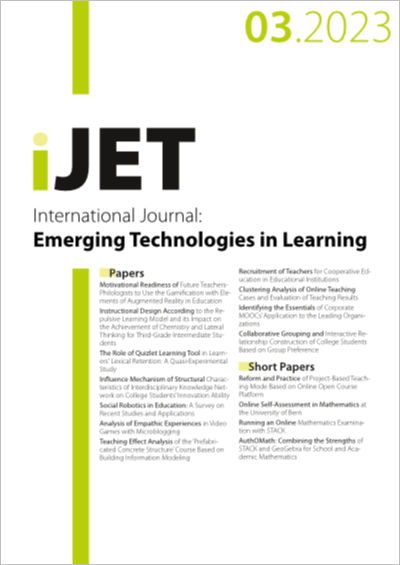Instructional Design According to the Repulsive Learning Model and its Impact on the Achievement of Chemistry and Lateral Thinking for Third-Grade Intermediate Students
DOI:
https://doi.org/10.3991/ijet.v18i03.37025Keywords:
Instructional Design, The Repulsive (allosteric) Learning Model, Achievement.Abstract
Identify the effect of an educational design according to the repulsive (allosteric) learning model on the achievement of chemistry and lateral thinking. The sample consisted of (59) students from third-grade intermediate students. They were randomly distributed into two groups (experimental and control), and the equivalence was done in (chronological age, previous achievement in chemistry, intelligence, lateral thinking). The (30) students from experimental group were taught according to the instructional design, other 29 students from the (control) group were taught according to the usual method. Two tests done, one of them is an achievement test consisted of (30) items of the type of multiple choice, the other was a lateral thinking test consisted of (26) items, of (multiple choice). Both of the validity and reliability to the two tools were verified. The results revealed the superiority of the experimental group who studied by the instructional design according to the repulsive learning model in achievement and lateral thinking.
Downloads
Published
How to Cite
Issue
Section
License
Copyright (c) 2023 Suhad Abdul Ameer Abbood

This work is licensed under a Creative Commons Attribution 4.0 International License.



